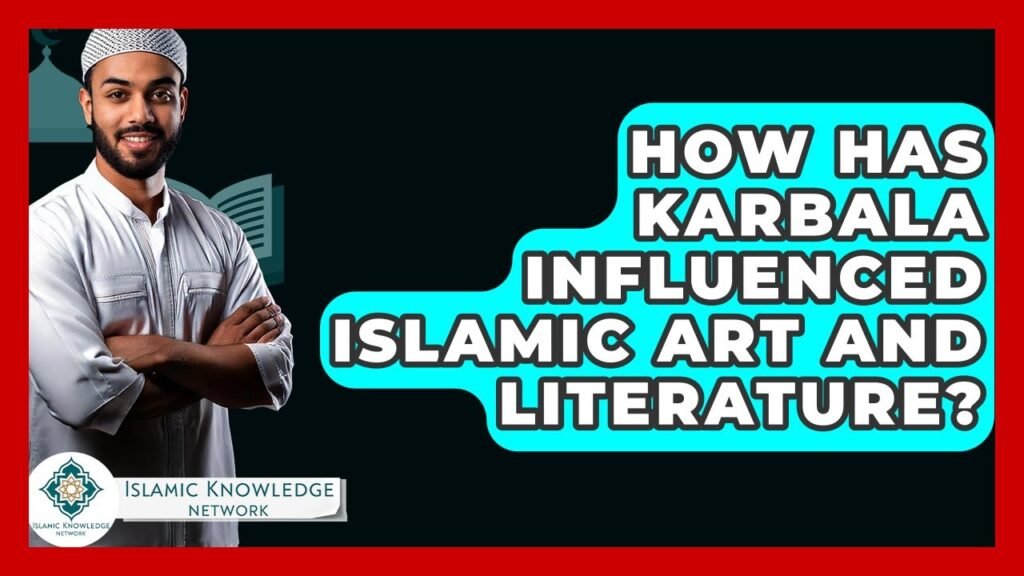You are here to read: How Has Karbala Shaped Islamic Art and Literature? – A Thoughtfully Written Guide Offering Spiritual Wisdom and Travel Advice for Every Pilgrim who is going on holy journey of Hajj or Umrah.
The city of Karbala holds profound significance in Islamic history, particularly due to the events of the Battle of Karbala in 680 CE. This pivotal moment not only shaped the spiritual landscape of Islam but also left an indelible mark on Islamic art and literature. The sacrifices of Imam Hussain and his companions continue to inspire countless artists and writers, fostering a rich tapestry of artistic expression that resonates with themes of martyrdom, bravery, and social justice. In examining how Karbala has influenced these domains, we uncover a legacy that transcends time and culture, enriching the Islamic narrative.
At Airlink Hajj and Umrah, we recognize the importance of understanding such historical events, as they connect deeply with the spiritual journeys of millions of Muslims who undertake Hajj and Umrah. Our blog features all the latest updates and insights to enhance your pilgrimage experience, while also delving into significant historical contexts like that of Karbala. Join us as we explore how this iconic event has shaped Islamic art and literature, and how it continues to inspire devotion and creativity across generations. Whether you’re planning your pilgrimage or simply seeking knowledge, we aim to provide enriching content for every Muslim.
How Has Karbala Shaped Islamic Art and Literature?
The events of Karbala hold profound significance in Islamic history, deeply influencing art and literature across various cultures. The martyrdom of Imam Hussein and his companions has inspired countless artistic expressions, from intricate calligraphy to vibrant paintings and poignant poetry. Artists often depict scenes from the Battle of Karbala, infusing their works with deep emotional resonance, symbolizing sacrifice, justice, and resistance against tyranny. This artistic legacy not only honors Imam Hussein but also serves as a reminder of the values he stood for.
In literature, the story of Karbala has inspired a rich tapestry of narratives, ranging from epic poems to reflective prose. Renowned poets like Allama Iqbal and others have immortalized the events of Karbala, emphasizing themes of valor, piety, and endurance. These literary works are often utilized in religious gatherings, fostering a sense of community and shared identity among Muslims.
At Airlink Hajj and Umrah, we celebrate this rich heritage by providing insights into how the themes of Karbala continue to influence contemporary Islamic thought. Our blog keeps you updated with the latest information about Hajj and Umrah, reflecting the spiritual journey that many undertake, echoing the values represented in Karbala.
FAQ on “How Has Karbala Shaped Islamic Art and Literature?”
FAQ 1: What is the significance of Karbala in Islamic history?
Answer: Karbala is significant as the site of the martyrdom of Imam Hussein, the grandson of the Prophet Muhammad, in 680 CE. This event symbolizes the struggle against tyranny and injustice, deeply influencing Islamic values and inspiring various forms of artistic and literary expression.
You're at the middle of this awesome post at AirlinkHajjandUmrah.com through: How Has Karbala Shaped Islamic Art and Literature?. Keep reading, it gets better!
FAQ 2: How has the tragedy of Karbala influenced Islamic literature?
Answer: The tragedy of Karbala has inspired countless literary works, including poetry, prose, and theater. Themes of sacrifice, justice, and resistance against oppression are prevalent, leading to a rich body of literature that reflects the moral and ethical teachings derived from the events.
FAQ 3: What role does visual art play in conveying the story of Karbala?
Answer: Visual art plays a vital role in illustrating the events of Karbala. Artists use paintings, calligraphy, and miniatures to depict key moments and figures, making the story accessible to the public and serving as a means of remembrance and reflection on its moral lessons.
FAQ 4: How do modern artists interpret Karbala in their works?
Answer: Modern artists interpret Karbala through contemporary mediums and styles, often blending traditional motifs with modern techniques. This approach allows them to address current social and political issues, drawing parallels between the struggle faced by Imam Hussein and contemporary injustices.
FAQ 5: Are there specific festivals or events that promote the art and literature of Karbala?
Answer: Yes, events such as Muharram, especially Ashura, commemorate the martyrdom of Imam Hussein. These occasions often include poetry recitations, theatrical performances, and art exhibitions that celebrate and reflect upon the significance of Karbala in Islamic culture.
That wraps up How Has Karbala Shaped Islamic Art and Literature?. Thanks for sticking with us till here! Share this: How Has Karbala Shaped Islamic Art and Literature? with your friends.
Check our homepage at Air Link Hajj & Umrah for more awesome updates.
Some interesting posts are: 1: Umrah Mubarak, 2: When is Umrah closed 2026?, 3: When does Umrah start after Hajj 2026?
Mushu, an experienced Saudi Arabia traveler and writer, shares insightful tips and spiritual reflections to enhance Hajj and Umrah journeys for fellow pilgrims. He has been to Makkah and Madina from 2016 to 2023 many times and his posts will reflect this.







